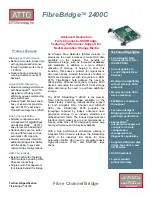
Troubleshooting Guide
1000BASE-T/100BASE-TX/10BASE-T Physical Layer Compliance Tests Manual
124
Intel Confidential
G.1.2
Network Analyzer Setups
•
Make sure all test equipment meets or exceeds the specifications listed in the introduction to
this manual.
•
Verify that the analyzer is in “Network Analyzer” mode if it is a Spectrum/Network Analyzer.
•
Make sure that the test equipment has been configured as shown in the test procedure.
•
Check that the test fixtures have been connected as shown in
•
Make sure the host computer is on and phyconf.exe is running. Although it may appear that the
test can be done with the unit off, it does not always provide the same results. The only valid
results are those that are taken when the UUT is powered up and phyconf.exe has been
configured.
•
Recalibrate the network analyzer as described in the test procedure. After calibration, confirm
that the 50 ohm load shows a return loss of 9.54 dB. Also verify that the open and short loads
produce the expected results.
•
Check the cables connecting the network analyzer to the test fixture, and the test fixture to the
UUT. If the analyzer reading changes noticeably when any of the equipment is moved
(especially the coaxial cable) the cabling or fixture may need to be replaced.
G.2
Conformance Problems
Several factors can cause boards to fail PHY conformance testing. The best way to prevent failure
is to follow Intel’s reference schematic and board layout guidelines which can be found in the
product design kit.
Many of the tests described in this document deal with the transmitter characteristics. If the
transmitter fails to meet specification, the link partner’s receiver may fail to correctly receive the
signals, resulting in high Bit Error Rates on the receiving unit.
G.3
Differential Output Voltage (UTP) (ANSI
specification 9.1.2.2)
This is one of the more important tests conducted during PHY conformance testing. If the design
exhibits output voltage that is too high, the networking subsystem will, most likely, not pass FCC
and EN55022 emissions testing.
In a networking environment, a system with this condition would not be able to communicate with
other TP-PMD compliant systems. Receiving units would ignore any signal with an amplitude
greater than the TP-PMD specified maximum.
A different set of problems characterize a design which fails to meet the minimum differential
output voltage specification. A particularly significant symptom of this condition is the inability to
establish communication with receive partners at the end of long cables (for example, 100 meters).
Verify that the appropriate component values have been used to implement the voltage reference
component. This involves revisiting resistor and diode values for an external voltage reference or a
resistor value for an internal voltage reference. The 10 and 100 Mbit biasing resistors should be
verified against the values provided on reference designs. These biasing resistors should be tuned.
















































